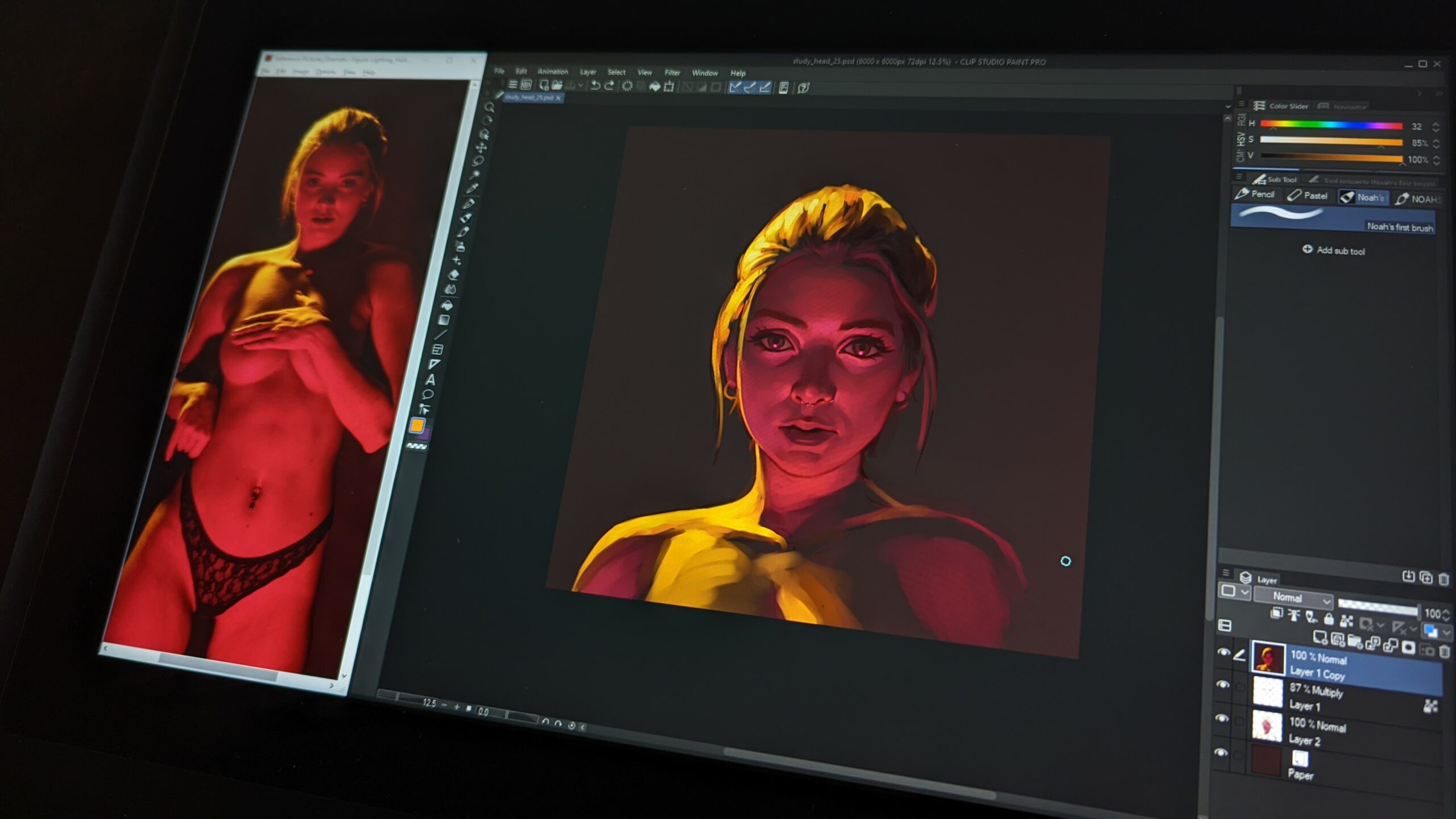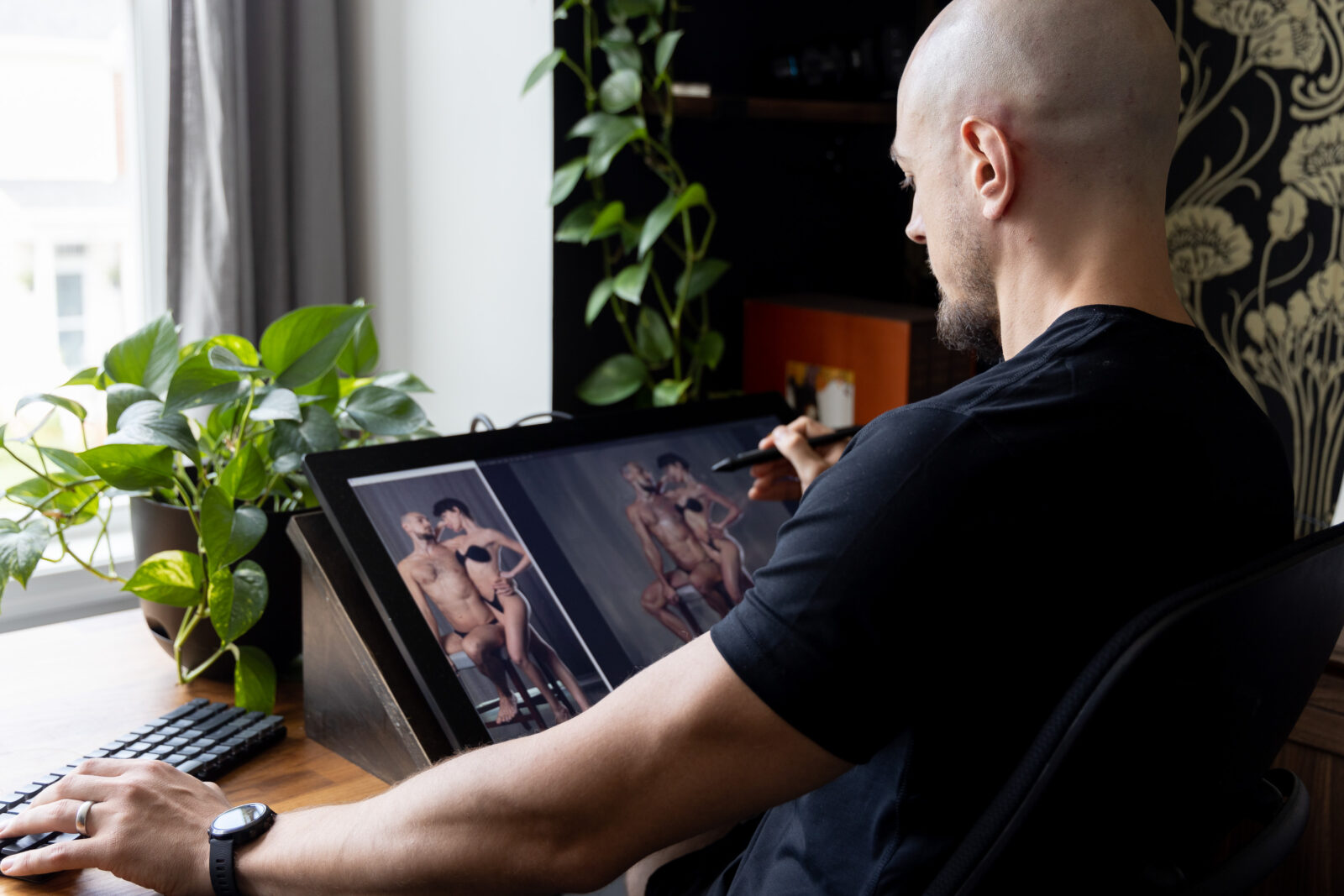If you somehow found your way here and have no idea who I am or what Paint Figures Better is, then let me explain: this is the resources list from my book, Paint Figures Better. I’ll try add any extremely good resources I come across in the future here, but you can’t go wrong with any of these. Enjoy!
Anatomy for Sculptors: Understanding the Human Body by Uldis Zarins with Sandis Kondrats
I think this is the best book for learning to draw and paint figures. And it’s not even for painters! It’s well explained and clearly illustrated and is all about understanding the forms, probably because sculptors really need to know that stuff.
All of Andrew Loomis’s books
Buy and read all of his books, particularly: Successful Drawing & Figure Drawing for All It’s Worth, Creative Illustration, and Drawing the Head & the Hands. They’re all a bit dated but they’re also all excellent.
Bridgman’s Complete Guide to Drawing From Life
Bridgman has some of best chunky figure drawings in existence. His writing is a bit impenetrable but if you get through it you can still learn solid form from him.
Anatomy Lessons from the Great Masters by Robert Beverly Hale
This one is dated as well but that doesn’t make it any less useful. Hale goes through a number of master drawings & paintings to show how they imply form and anatomy. I’m a big fan of studying masters and imitating them, so this book aligns nicely with that.
Figure Drawing: Design and Invention by Michael Hampton
One of the few figure drawing books I found that balanced anatomy, form, gesture, observation, and imagination in a sensible way.
Proko.com
Proko has a lot to offer. There are, of course, some great drawing content on there. But I’m also going to recommend the sculpture class on there for anyone looking to try their hands at sculpting as a way to round out their figure education.
youtube.com/moderndayjames
I learned a lot from James’s free YouTube channel. He presents concepts clearly and he had a solid, structural drawing style that I connected with immediately. His videos are too good to be free, but there we have it. Go binge his channel.
Will Weston
I’ve never taken any of his courses but even just following his Instagram feed is an education. He knows his stuff and he seems to teach (very) well.
Atomic Habits by James Clear
I’m a big fan of habits, productivity, and trying to live a better life. James Clear is the best writer I know on these subjects. Most self-help books in this area are fluffy garbage but Atomic Habits is excellent. No fluff, just front-to-back useful stuff.
What I used to do all of the digital paintings in this book
I used several machines and tablets to make the art in this book. I started with my Intuos Pro, which I always loved. But then I realized I wanted to paint on a screen, so I needed to upgrade to a tablet display. I stole my wife’s Cintiq Companion 2 for a while, but that wasn’t ideal because the tethering to my desktop was a bit flaky. I also stole my wife’s iPad Pro and enjoyed it enough that I bought my own. I still use that for work when I’m not at my desktop.
I bought a Cintiq Pro 13 and that served me well enough for a while (it’s what I used for most of the #100FigurePaintings), but eventually I started feeling a little cramped.
The nice folks at Huion sent me a Kamvas 24 Pro (4K) tablet display to try out and I love it. I do all of my work on there now and I’d recommend it in a heartbeat. I recorded a little review that’s on YouTube if you want to check that out.
Clip Studio Paint
I have a hard time recommending anyone use Photoshop for digital painting any more. It’s just too expensive. I switched over to Clip Studio Paint after fifteen years in Photoshop and haven’t looked back. It’s even available on the iPad.
Watts Atelier of the Arts
Watts is one of the best places in the world to learn how to make art. A little spot in an unremarkable strip mall north of San Diego, this place is a gem and the teachers are incredibly good. They also offer an online program, for all of those who can’t be there.
BRUSHES.WTF
These are the brushes I used for most of the studies in this book. I’ve been using them for over a year now and I still think it’s a great pack and I do nearly all of my painting with them.
imrachelbradley.com/brushes
I realize I’m biased because these are my wife’s brushes, but they’re genuinely the best digital brushes I’ve used for imitating an oil painting look.
lanedraws.com
I used Lane’s digital charcoal brushes for some of the black and white portraits throughout the book. It’s an excellent set and worth every penny.
Reference.Pictures
My wife and I make reference for artists. The vast majority of the studies in this book were made using reference that you can find there on our site. What isn’t free is very reasonably priced and by purchasing them you’re helping us make more cool stuff for artists, which I think means you’re a cool person.
imrachelbradley.com
Rachel makes some of her own reference in addition to the stuff we do together on Reference.Pictures. They are excellent, of course, and you’ll recognize many of the studies in this book from the reference on her site.

